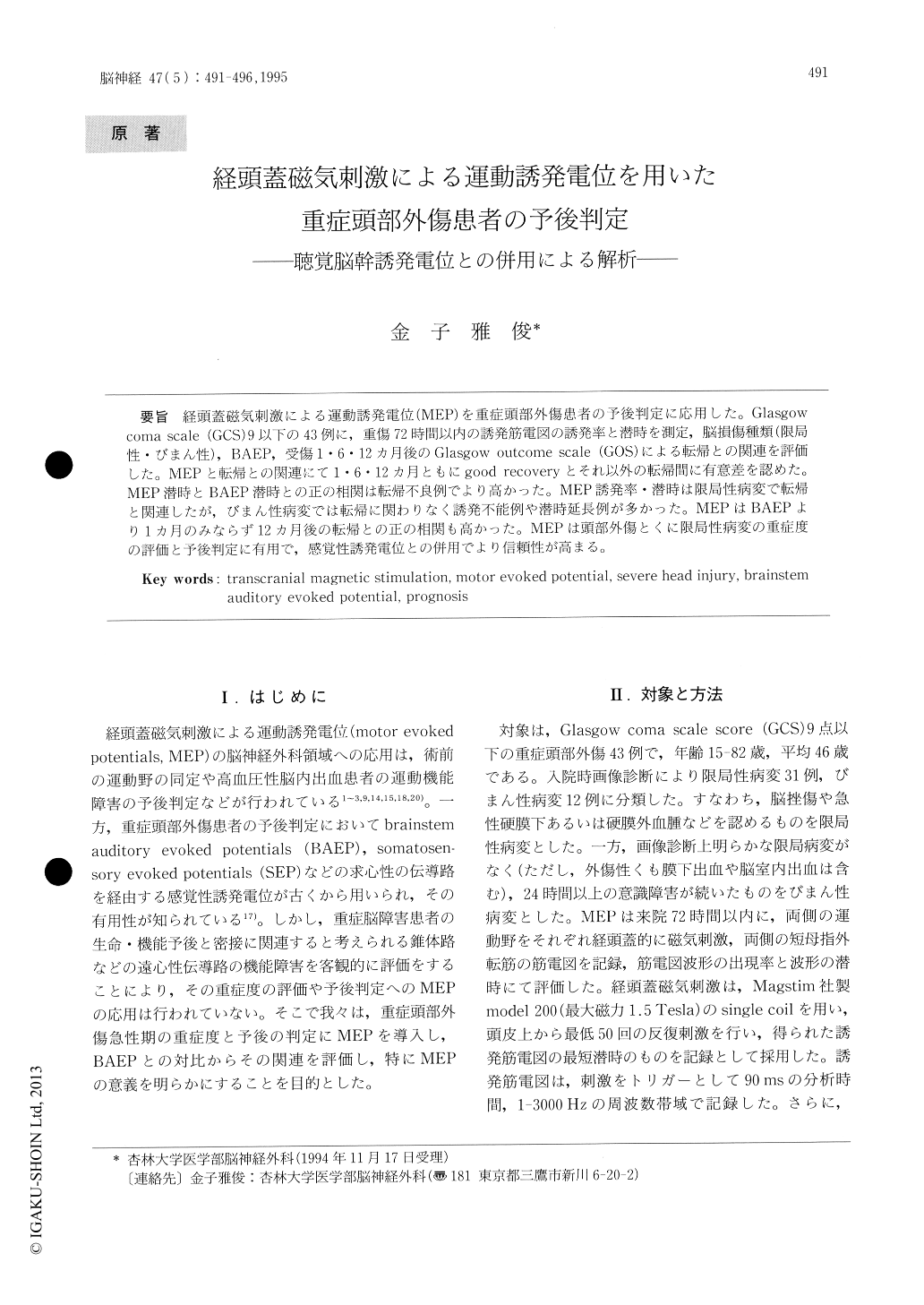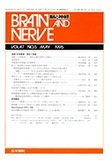Japanese
English
- 有料閲覧
- Abstract 文献概要
- 1ページ目 Look Inside
経頭蓋磁気刺激による運動誘発電位(MEP)を重症頭部外傷患者の予後判定に応用した。Glasgow coma scale(GCS)9以下の43例に,重傷72時間以内の誘発筋電図の誘発率と潜時を測定,脳損傷種類(限局性・びまん性),BAEP,受傷1・6・12カ月後のGlasgow outcome scale(GOS)による転帰との関連を評価した。MEPと転帰との関連にて1・6・12カ月ともにgood recoveryとそれ以外の転帰間に有意差を認めた。MEP潜時とBAEP潜時との正の相関は転帰不良例でより高かった。MEP誘発率・潜時は限局性病変で転帰と関連したが,びまん性病変では転帰に関わりなく誘発不能例や潜時延長例が多かった。MEPはBAEPより1カ月のみならず12カ月後の転帰との正の相関も高かった。MEPは頭部外傷とくに限局性病変の重症度の評価と予後判定に有用で.感覚性誘発電位との併用でより信頼性が高まる。
Prognostic evaluation of severe head injury was performed on the basis of transcranial magnetic motor evoked potentials (MEPs) and brainstem auditory evoked potentials (BAEPs).
The subjects were 43 severe head injury patients with Glasgow Coma Scale Scores (GCS) of 9 or less. MEPs were recorded within 3 days after the injury. Patient outcome at 1, 6 and 12 months after the injury was correlated with the MEPs and BAEPs. Differences between MEP and BAEP findings in focal lesions and diffuse lesions also were analyzed.

Copyright © 1995, Igaku-Shoin Ltd. All rights reserved.


